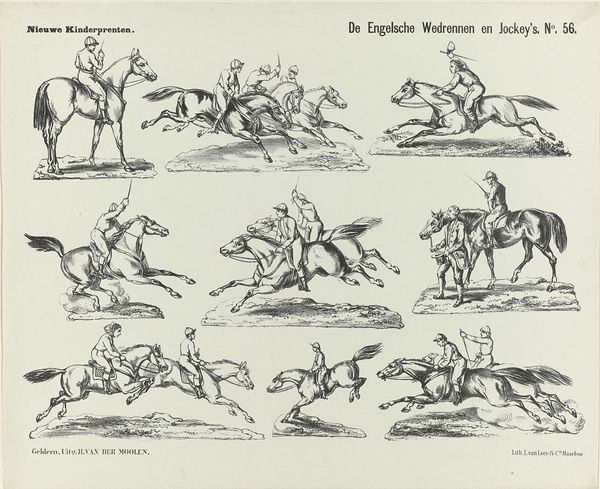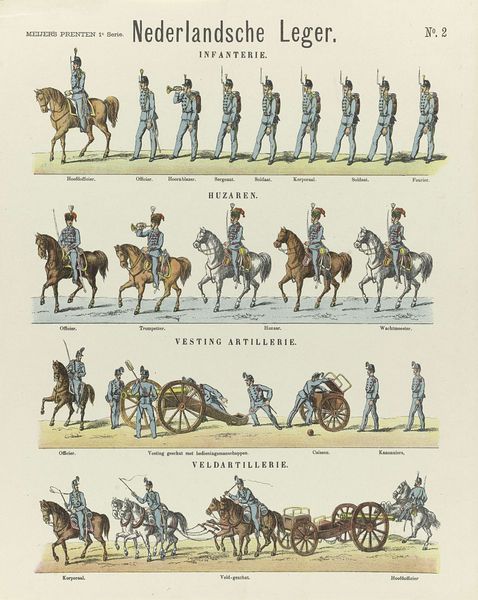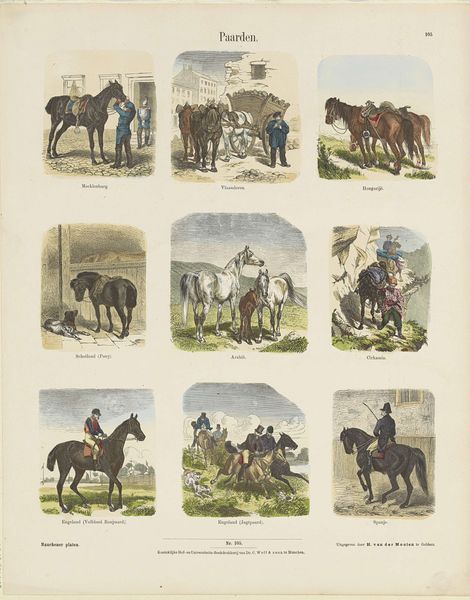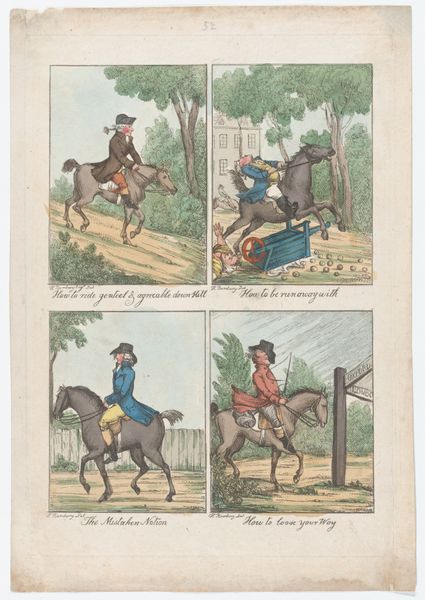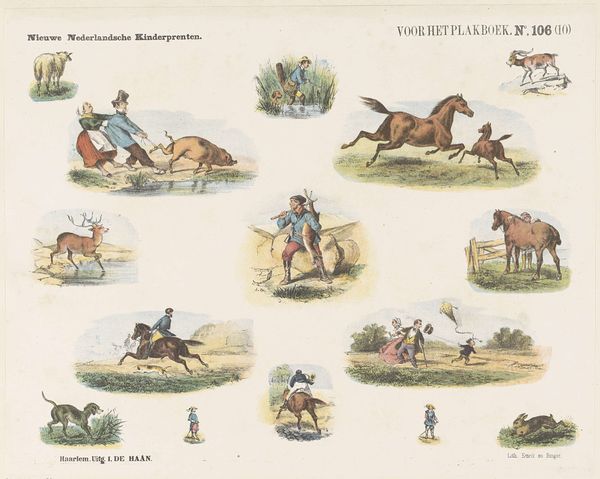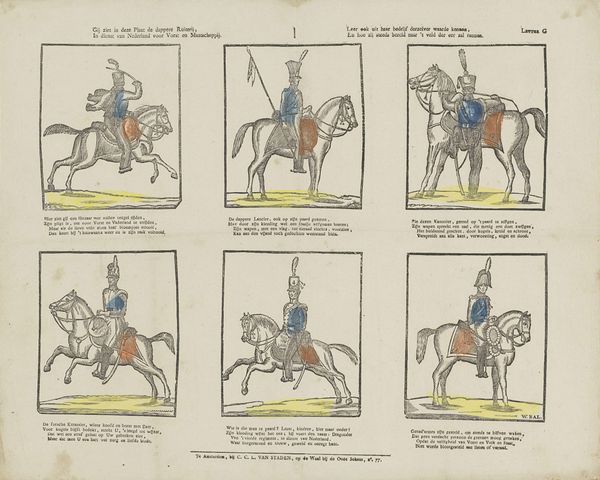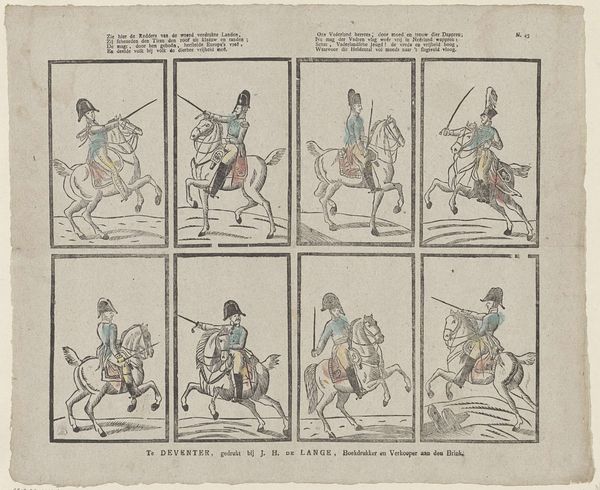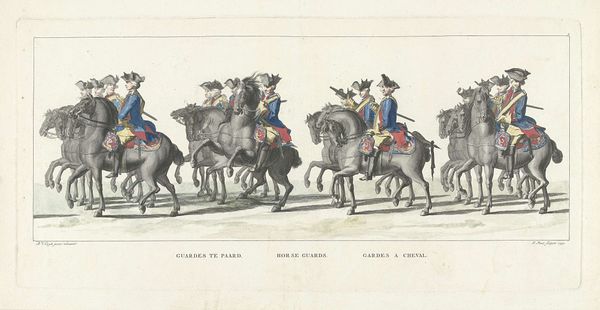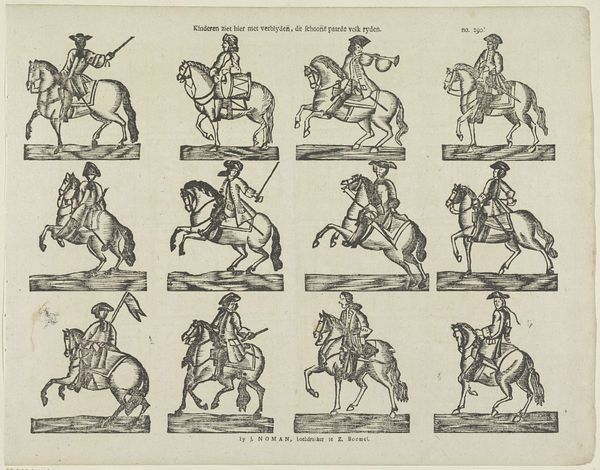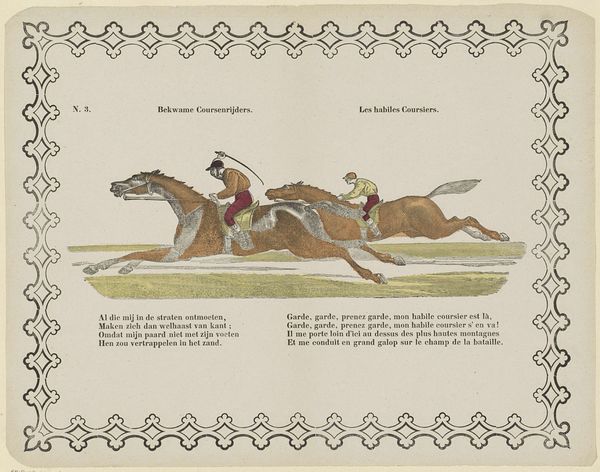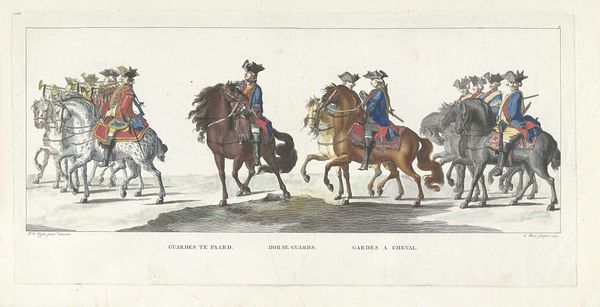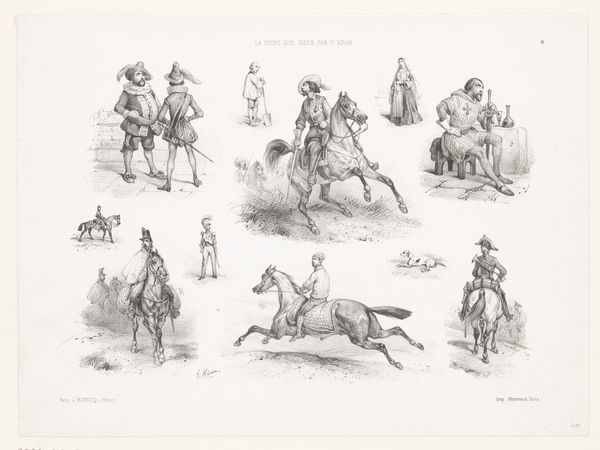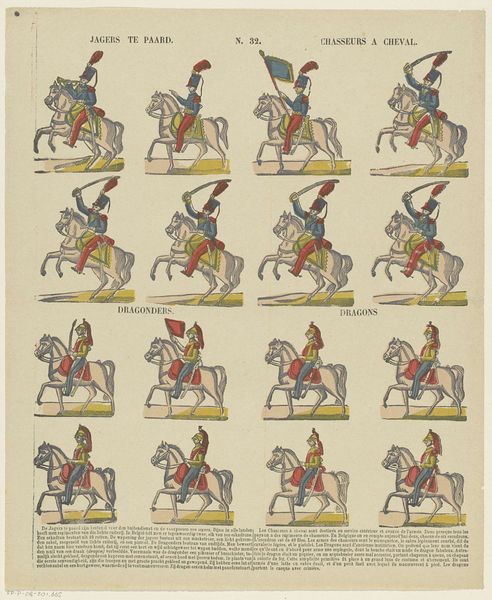
lithograph, print
#
16_19th-century
#
dutch-golden-age
#
lithograph
# print
#
landscape
#
figuration
#
genre-painting
#
academic-art
#
realism
Dimensions: height 340 mm, width 426 mm
Copyright: Rijks Museum: Open Domain
Editor: This is "De Engelsche wedrennen en jockey's," or "The English Races and Jockeys," a lithograph print from 1881 by De Ruyter & Meijer. It's a series of images of horses and jockeys arranged on the page. They almost look like paper dolls, or characters cut from a children's book. I'm curious, what stands out to you when you look at this piece? Curator: What immediately captures my attention is the depiction of motion—or rather, the attempt to capture motion in a still image. Consider how each horse is rendered in a slightly different pose. What do you think the varied poses communicate? Editor: Maybe they're trying to show different stages of the race? Each image is a slightly different moment? Curator: Exactly! And note how each image is separated, isolated on its own little patch of 'ground.' This compartmentalization draws attention to the symbolism of the race itself. The race, whether it's horse racing or the 'race of life', always reflects a human aspiration, a drive toward achievement. And it represents the relationship between humans and nature. Does the print style add another dimension to that idea? Editor: You mean, like how lithographs can make multiple copies? So the aspiration for progress can be copied, too? Curator: Precisely! It highlights a cultural value accessible to many. This artwork speaks volumes about how society perceives progress, competition, and our relationship with animals during that period. Editor: That's really interesting. It's more than just a picture of horses running; it reflects broader cultural ideas about aspiration and progress. Curator: Absolutely. Art is a window into the soul of a society, reflecting its values, dreams, and anxieties, encoded in seemingly simple imagery. We are continuously rewriting our vision by giving importance to symbols and cultural values through observation.
Comments
No comments
Be the first to comment and join the conversation on the ultimate creative platform.
